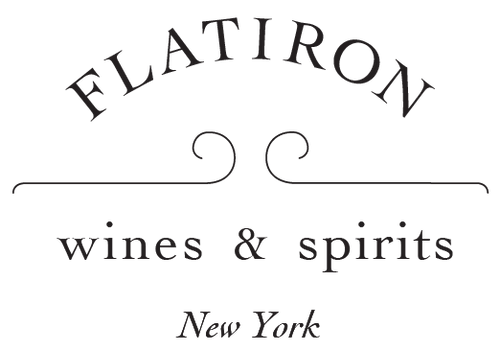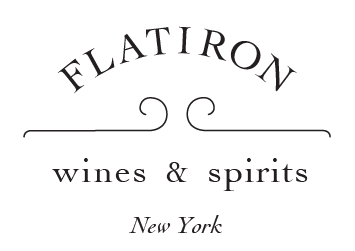FEATURED: Vadespino's Sherry Shines Against Champagne
Welcome back to our newest weekly blog series! Here, we will take an even deeper dive into one of our favorite wine stories of the week. A shorter version of this story was featured in our newsletter just yesterday.
As always for the best source of free wine stories and our deepest discount, subscribe to our newsletter. Now, we've decided to extend some of our stories for the blog. So, you can look forward to Features on Thursdays.
Whether you read yesterday's newsletter or not, this is not the post to skip.
Today: Valdespino’s Champagne-like Sherry.

Sometimes, when I’m feeling especially bold, I’ll tell people that Sherry is like Champagne. (notably, without the bubbles.) No matter how true this statement is, it still elicits a reaction somewhere between confusion and outright disbelief.
We know that Champagne is for celebrations, imbued with good taste--often with the price tag to match. I don’t have to be psychic to guess what you’re thinking: “but, isn’t Sherry that sweet stuff my aunt tipped out of a jug that she hid under the kitchen sink?” And yes, that may be true for some. But recently, I attended an industry event, a lunch, comparing the spectacular wines of Valdespino to our favorite Champagnes. I kid you not: this illustrated, beyond a doubt, that Valdespino has more in common with venerated Champagne Growers than grocery store “sherry,” (except in price).
Starting behind the scenes, their industries are remarkably similar: Champagne Houses and Sherry Bodegas are both controlled by the often foreign, merchant class which dominates the marketplace. These larger brands buy up grapes from small land holders, blending ad nauseum into a well-tested signature ‘style.’ This wine is then shipped and distributed around the globe.
While varying degrees of quality are produced in both places, Champagne has had the good fortune--like diamonds and bottled water--of extremely strong branding. This is what has kept the ‘Champagne’ image elevated above all the rest of the world's wines. Sherry, once the favorite wine of kings, has been on a rather sad, 50 year decline in popularity. It has been wildly misunderstood and now is one of the most undervalued categories in wine.
That said (putting the business aside for a moment) it’s impossible to deny wine is a reflection of place. So, if the places differ, wines from those places tend reflect those differences. Let’s look at the geography of Champagne and Jerez:
- Far northern edge of where high quality wine grapes are able to ripen.
- Rainy continental climate.
- harsh, cold winters
- hot, short summers
- wildly varying vintages.
- Further south than Sicily, nearly kissing Morocco.
- Mediterranean climate
- plenty of sunshine for ripeness
- rain is confined to short winters
- plants struggle to survive the summer heat.
So, how can these fantastically different growing conditions be reconciled to produce such similar wines?
The answer is two fold:
- Chalk Soils: bringing brightness and sharp texture
- Aging: providing complexity and soft mouthfeel
CHALK:
Both regions have highly prized chalk soils. (The soil in Jerez is alled Albariza.) Champagne’s grower movement has begun moving away from pan-regional blends in favor of terroir-focused, single vineyard wines. Valdespino, in a similar turn, has always made single vineyard wines from their Machaduno Alto vineyard. High acidity, intense minerality, and chalky texture pierce through both, making them eerily similar side by side.
Albariza is strikingly pure white with chalk. You can see one of the Valdespino vinyards in the photo above. If you have a moment, scroll back and borrow a moment or two to focus on the texture and color of this soil. It’s truly remarkable, and you can taste it in the glass.
AGING:
No expense is spared in crafting the inspiring wines of Valdespino. Vines are old and bush trained, fermentation is done in 600L wooden vats (a back breaking effort), and aging is 3-8 times longer than required. One might expect such a meticulous wine, that tastes like Champagne would have a price tag to match. Instead they are shining beacons of value.
So, even though the production and geography suggest these wines should be markedly different, the esters formed by extended aging turn out to be the same. This gives both Champagne, and Valdespino sherries the characteristic creamy-roundness which balances the sharp acidity. Clear notes of nuttiness, biscuits, acacia and green apple were present in every single wine we tasted at that lunch--bubbles or no.
Don’t take my word for it! You can try it at home and let me know what you think:
Valdespino, Manzanilla En Rama Deliciosa [Saca 2019] (375ml) $14.99
From Pago Miraflores, a vineyard right next to the Atlantic. Fermented in stainless steel and aged for over 5 years. “En Rama” means unfined, unfiltered and so, this is as close as you can get to tasting sherry from the cask. Sharp and saline, baked dough, like a pretzel, lemon rind, wild herbs, green almonds, green olives, taught yet waxy. This wine screams for seafood.
Valdespino, Fino Inocente, NV (375ml) $14.99
From Jerez’ highest vineyard, Marchaduno Alta, this is the only fino still be fermented in 600L barrels with indigenous yeasts and bottled after 10+ years of aging. Very complex, yeasty, bread and toast, warm hay, briny olives, and salty almonds, with detailed fruit (green apples, lemon and grapefruit zest). It’s full bodied, and as it warms up the flavors expand with herbs, vanilla, acacia flowers and honey. The long chalky finish has you going back again and again. It’s almost impossible not to drink it in one sitting, but try: there’s amazing development over a few weeks in the fridge.
Valdespino, Amontillado Tío Diego, $23.99
Made from Fino Inocente (above), but aged for 8 years in the 600L barrels before it is moved to solera for 6+ years of oxidative aging. The complex Inocente flavors shine through and are layered with hazelnuts, butter, dough and caramel, walnuts, toast, slightly smokey, lemon zest and creamy long finish.
Try your own comparative tasting by drinking the Sherry against these Champagnes:
Laherte Freres Les Grandes Crayeres Extra Brut Bland de Blanc, NV [2014 base], $85.99
Benoit Dehu, Cuvee de Initiation, NV $79.99
Keep apprised of all of our most fascinating wine stories by subscribing to our newsletter here. In addition, keep your eyes on our site next Thursday for the next in our Featured series.
Let us know what you think of this new series! Is there a wine story for which you are craving more info? You can email us about it here.









